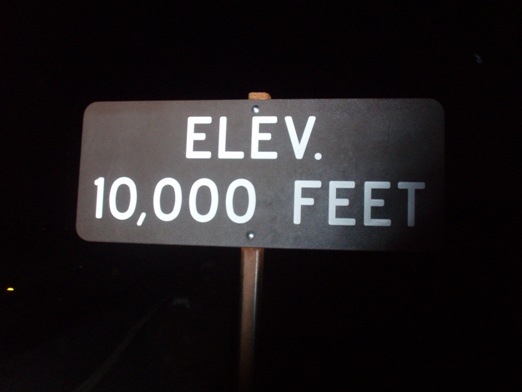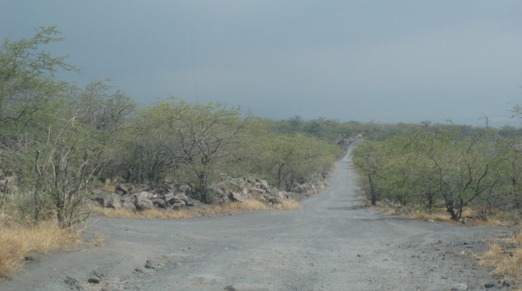“Hills are speed work in disguise.” – Frank Shorter
With a good hill, you can train almost perfectly. Hills build leg strength, increase your running economy (efficiency), prevent injuries, reduce impact forces on your legs, increase stride power, and improve the neuromuscular communication pathway.
Excited to run more hills yet?

If there was one training tool I’d recommend for runners, it would probably be hills. You can structure almost countless workouts on a long hill, getting in almost every type of training stimulus that you need for any race. Hills are a distance runners training playground.
I am supremely lucky to live where I do – right outside Washington, DC – and have access to Rock Creek Park. You have to stay along the main road in the Park to avoid any hills, but I rarely do that. You can usually find me criss-crossing the trails along the creek and up into the hills every morning.
Because I am a huge running nerd, I once calculated that I spend about two miles climbing during a ten mile run in the park. This includes gradual uphills to severe climbs where I’m struggling to lift my knees. The combination of these hill grades provide an incredible strength and injury prevention workout in every run.
I’m also able to run hill sprints and hill intervals regularly. Consistent hill running is one of the main reasons that I haven’t been hurt in two and half years. Hills are powerful if you introduce them gradually into your training program and run the right workouts for you.
Hill Running Workouts (Uphill, Downhill, & Sprints, Oh My!)
There are almost countless hill workouts that you can run, so I enlisted the help of Mark Coleman to talk about his favorite workouts and why he runs them. He is a Team Member on dailymile and blogs at FoCo Runner.

Enter Mark:
My favorite workouts include hill sprints and uphill/downhill repeats. Including more of these workouts when I reach a plateau in my running has helped me break through.
Running Fast Downhill
Many runners think only uphill running as being beneficial, due to the strength and leg speed improvements, but I like to run both uphill and downhill repeats.
Alternating uphill and downhill repeats is often convenient because, well, to run up a hill repeatedly, I find that I do need to get back to the bottom after each climb. Sure, I could mosey back down and use that as a recovery interval, but then I’d miss out the benefits of fast downhill running. Downhill running gives the quads some experience with eccentric contractions (a contraction where the muscle elongates under tension), which builds durability and improves elastic recoil and energy return. It also helps a runner develop a smooth, efficient form running at faster speeds and improves overall running efficiency.
I have to throw in a word of caution here that form is key in downhill running. Running downhill lazily, with poor form, can contribute to flare-ups in iliotibial band and patellofemoral pain syndromes, among other injuries.
Here’s an example workout that I like:
Warm-up: 2-3 miles easy/moderate.
Hill Intervals: 2-5 x
- .25 mile downhill @ smooth/fast effort
- 2-3 minutes easy running or walking
- .25 mile uphill @ hard effort
- 2-3 minutes easy running or walking
Warm-down: 1-3 miles easy/moderate aerobic pace
Uphill and Downhill Intervals Cheat Sheet:
- Downhill intervals should be hard in the effort sense, not in the ground-pounding sense. Try to be smooth and fast and avoid putting the brakes on with each step by kicking the feet out and heel-striking.
- While running uphill repeats, focus on turnover and picking the knees up. Shoot for a midfoot/forefoot strike and a high cadence.
- I rest between intervals by feel. When I feel like I am ready to complete another repeat, I go.
- You can run these weekly or alternate with flat repeats from week to week.
- If you haven’t done hill repeats before start with just 2-3, and work your way up by adding one more repeat to each successive workout.
- If you find this type of workout boring, pick a trail route with lots of hills and turn it into a fartlek-style workout.
Sprinting… Yes, it’s for Distance Runners
I don’t use the word “sprint” loosely. I’m talking about short (8-12 second), nearly all-out uphill running efforts – not just hard running, like traditional repeats or speed work. The uphill sprint workout should be done on a hill that rises about 14-16 feet for every 100 feet of running (14-16% incline). This steepness forces you to work against gravity and get huge gains from a small amount of running.
This is a strenuous strength workout, so I don’t combine it with other hard running. I do my hill sprints immediately after an easy aerobic or recovery run of 3-5 miles. A typical recovery run with hill sprints would be structured like this:
Warm-up: 5 miles easy.
Hill Sprints: 3-10 x 10 seconds at near-max to max effort – or 98-100% top speed. Full recovery: slow walk down the hill plus more time to ensure you’re fully ready for the next sprint.
Warm-down: 2-5 minutes easy running.
[Jason’s note: hill sprints are the real deal. They’re short, extremely fast, and hugely beneficial to any runner. Read more about them here.]
Hill sprints cheat sheet:
- Concentrate on a fast turnover, forefoot strike, and running as fast as you possibly can. Because of the speed and hill, your form will largely take care of itself.
- Rest should be COMPLETE between sprints. If you feel like one more sprint would be difficult, you’ve done enough. Don’t risk injury.
- Start with 2-3 repetitions at near-max effort the first time, then increase the intensity to max effort a week later. After the second session you can increase the number of hill sprints.
- The first hill sprint should always be at 95-98% of max intensity to warm-up. Then you can run at 100% effort.
Hill Running Strategy & Race Prep
I use hill workouts to build strength, stamina, durability, leg turnover, and running efficiency early in a training cycle. Later in my training cycle I run once a week on a hillier route to stay sharp. I have no hard and fast rules about it. I might do sprints one week, and repeats the next, or alternate them from week to week with either speed work at the track or a tempo workout.
Hill running strategy is key even in races with only modest hills. I have a two-part strategy:
Going uphill, I focus on running with steady effort. I don’t force my way up, but rather allow my posture to ease back just a little, focusing on a slightly higher knee lift, quick turnover, and shorter stride length.
Going downhill, I focus on staying smooth with my knees bent, midfoot striking if the hill isn’t too steep, and not braking or pounding the ground with my knee extended out in front of me. I try to keep my turnover up and “allow” full hip extension.
[Jason’s note: If I could explain downhill running strategy in one word, it would be RELAX. Don’t tense up, don’t brake, don’t panic. Just flow down the hill with a smooth, relaxed stride.]
My strategy is to steadily and efficiently progress up the hill without wearing myself out, then attack the downhill with a smooth, fast, and efficient stride.
##
Thanks Mark for adding your thoughts on effective hill running! I want to include a few of my own…
Hills are tough. They can help you reach a new level of performance, but they pose an inherent injury risk if you’re not used to them. Including 2-3 sessions of strength exercises like squats, dead lifts, and lunges can help your legs adapt more quickly to running hills. If you’re not sure where to start, I highly recommend the Rebel Strength Guide because it focuses on compound exercises and there’s a video of every exercise.
Beginners who aren’t use to hills should start with hillier runs (I call them “roller coaster runs”) before progressing to more structured hill workouts. For more workout ideas, check out my free digital book 52 Workouts, 52 Weeks, One Faster Runner.
I would be remiss to discuss hill running and not mention Arthur Lydiard, a coach who elevated New Zealand runners to the world’s elite by using hill circuits and hilly long runs. Considered one of the greatest coaches of all time, his training program was first outlined in his book Running the Lydiard Way in 1978. New Zealanders who follow Lydiard’s training principles continue to excel on the hills.
If you enjoyed this article, spread the love and share it with your running friends! You can also sign up for the Strength Running Team to get more exclusive content, two free guides, and workout ideas (exciting announcement coming soon!).